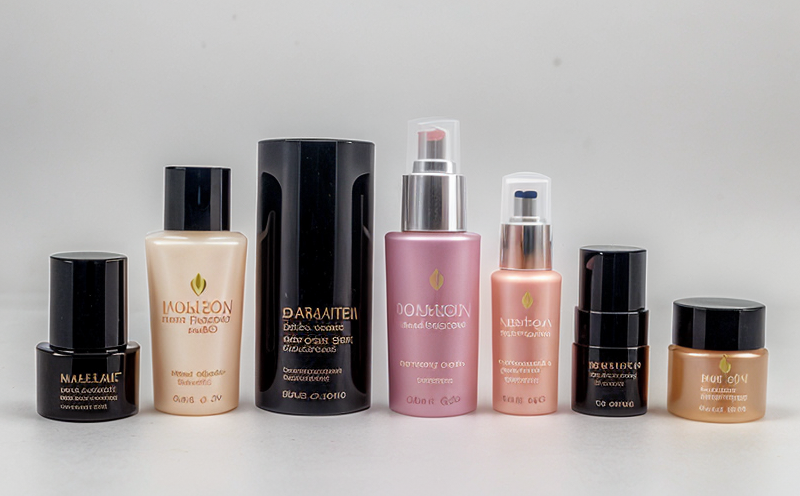Nanoparticle Migration Testing in Cosmetics Packaging
In recent years, nanotechnology has revolutionized the cosmetics industry by introducing nanoparticles into various products. These microscopic particles offer enhanced functionality and improved product performance. However, with increased use comes the need for rigorous testing to ensure safety and compliance.
Nanoparticle migration in cosmetics packaging refers to the transfer of nanoparticles from the cosmetic formulation or its container into the surrounding environment. This can occur through direct contact with skin, ingestion, inhalation, or absorption via the respiratory system. The potential risks associated with nanoparticle migration have led regulatory bodies like the European Union (EU) and the U.S. Food and Drug Administration (FDA) to mandate comprehensive testing.
Our laboratory specializes in providing nanoparticle migration testing services tailored specifically for cosmetics packaging. Our goal is to help manufacturers ensure that their products meet all relevant standards and regulations while maintaining product safety. By conducting thorough tests, we can identify any potential issues early on in the development process, allowing companies to make necessary adjustments before launching their products.
Importance of Testing
The significance of nanoparticle migration testing cannot be overstated. It ensures that cosmetic products remain safe for consumers by preventing harmful substances from leaching into the environment or being absorbed through skin contact. Additionally, this type of testing helps companies comply with international regulations such as those outlined in ISO standards.
Real-World Applications
- Detecting trace amounts of nanoparticles present in finished goods
- Evaluating the stability and integrity of packaging materials over time
- Identifying potential sources of contamination within production facilities
- Monitoring changes during product lifecycle stages
Why It Matters
The safety and efficacy of cosmetics are paramount considerations for both manufacturers and consumers alike. Regulatory requirements around the world mandate that certain chemicals be tested prior to market release, including those used in nanoparticle form within cosmetic products.
Regulatory compliance is crucial not only from an ethical standpoint but also due to legal implications. Non-compliance could lead to product recalls, financial losses, and damage to brand reputation. Furthermore, failing to address concerns regarding nanoparticle migration may result in health hazards if particles are found to migrate beyond permissible limits.
- Ensures adherence to international standards such as ISO 18112-3
- Promotes consumer trust by demonstrating commitment to quality control measures
- Aids in maintaining a competitive edge through reliable data supporting product claims
Scope and Methodology
| Parameter | Description |
|---|---|
| Sample Preparation | Packaging samples are carefully prepared according to specified protocols. |
| Exposure Conditions | The packaging undergoes controlled exposure conditions simulating real-world scenarios. |
| Sampling Frequency | Regular sampling intervals throughout the test duration to capture accurate data points. |
| Analytical Techniques | Advanced analytical techniques like ICP-MS are employed for precise measurement of nanoparticle concentrations. |
Quality and Reliability Assurance
- We employ highly qualified experts who possess extensive experience in nanotechnology research.
- All analytical instruments are calibrated regularly to ensure accuracy and precision.
To further enhance reliability, our laboratory participates in proficiency testing programs recognized globally. This allows us to continually verify the consistency of our results against industry benchmarks.





